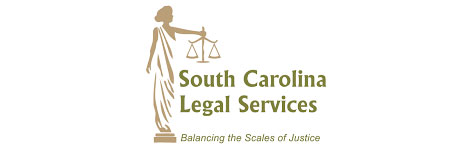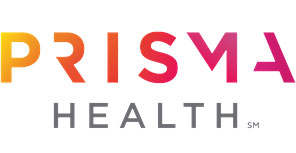Generously funded by the Duke Endowment, the South Carolina Medical Legal Partnership (SC MLP) Collaborative promotes diverse and holistic programming to help families eliminate health barriers. It serves as a model of shared resources and accountability for other MLPs across the nation.
Through formal planning and a sustainable framework based on collaborative, empirical analysis and integration of metrics, the SC MLP Collaborative has developed a model for collaboration across MLPs. Here it has identified tasks that can easily be managed jointly and otherwise shared across programs.
The following elements are critical to our sustainable framework:
- Maintain flexibility within the two MLP approaches but develop a shared resources portfolio to encourage open and transparent communication.
- Publish “lessons learned” by providing templates for screening, symposia, training and education, web-based tutorials for training of physicians, residents, lawyers, and law, medical and social work students. Data will demonstrate what worked in SC (urban v. rural, general, pediatric v. geriatric, high volume work v. impact litigation, etc.).
- Develop a health care value case model from the three-year MLP data analysis based on five long-term outcomes: (a) improved health outcomes; (b) cost avoidance/revenues generated will cover the program administration costs; (c) patient satisfaction; (d) education of SC’s healthcare work force; and (e) health equity.
MLP Collaborative Model
Building and Leveraging MLP Resources for Enhanced Success
Fundamentals
A medical-legal partnership, or MLP Collaborative, is the coming together of two or more MLPs to build on shared strengths and leverage resources. The MLPs in the collaborative can develop new projects to work on jointly, collaborate on existing work, or both. The precise work of the MLP collaborative can vary and evolve as the MLP collaborative develops and grows.
Building an MLP collaborative allows two or more MLPs to work together on cases and projects that they might independently not be able to work on or do as much work on. It allows the MLPs to leverage their independent resources to do more to address the social determinants of health.
Multiple factors affect the success of an MLP collaborative, and some will be unique to the MLPs forming the collaborative. Based on our experience, certain features and values, however, will contribute to the success of an MLP collaborative, no matter the MLPs involved.
Recognizing MLP Cultural Differences
Just as the individual partner organizations in any MLP have unique cultures, so too do individual MLPs have unique cultures.[1] For example, one MLP in an MLP collaborative might have a more informal communication structure than another. Recognizing, remaining open to, and accommodating for those kinds of MLP-specific cultural differences will contribute to an MLP collaborative’s success.
Open Dialogue
Related to flexibility, the partners in a collaborative must remain open to communication and dialogue about both factors contributing to success as well as obstacles to progress and how to manage them.
Recognizing MLP Cultural Differences
Just as the individual partner organizations in any MLP have unique cultures, so too do individual MLPs have unique cultures.[1] For example, one MLP in an MLP collaborative might have a more informal communication structure than another. Recognizing, remaining open to, and accommodating for those kinds of MLP-specific cultural differences will contribute to an MLP collaborative’s success.
Open Dialogue
Related to flexibility, the partners in a collaborative must remain open to communication and dialogue about both factors contributing to success as well as obstacles to progress and how to manage them.
Flexibility
Fostering and maintaining flexibility in communication, approaches, and progress on work, among other things, will also contribute to the success of an MLP collaborative. Flexibility in the approach to projects and which project themselve the MLPs collaborate on is important to success as well. We have found that the projects we thought we would work on when we first formed the MLP Collaborative were not always the ones we in fact did collaborate on.
Commitment to Regular Meetings
Open dialogue and progress cannot happen without collaborative members committing to attendance at regular meetings.
Building an MLP Collaborative
- Prior to forming an MLP collaborative, the MLPs that will be part of the collaborative should identify goals for the collaborative.
- These goals can focus on policy projects, case referrals, training programs, fundraising, or any other work the MLPs do or would like to do to address the social determinants of health.
- These goals may evolve. Consistent review of goals and work, therefore, is critical.
Form a steering committee and identify members: the steering committee will oversee all work of the MLP. Identify key members from each MLP who can represent each MLPs interests and communicate that to the steering committee.
Develop a collaborative budget: we recommend developing the budget in detail and before fundraising or beginning the work of the MLP. Note that the budget might not call for equal amounts of money for each MLP in the collaborative. Focus on the needs of the MLPs rather than equality in funding.
Set Regular Steering Committee Meeting Times: Given the complexity of the work of collaborating across MLPs, we have found meeting approximately every 6 weeks for two hours plus holding annual retreats both necessary and doable.
Although all MLPs have some shared values–to address the social determinants of health–identifying those that uniquely apply to the specific work of each MLP in the collaborative and the collaborative work itself will help guide future discussions about the work of the collaborative, including the progress of that work, new projects, and changes to existing collaborative work.
- Time: The nature and structure of MLPs mean all MLP staff generally have very limited time. In considering how much time working on the collaborative will take, budget for 10% more time than you expect.
- EMR: To the extent the MLPs in the collaborative will need to access or use EMR in their joint work, consider how the individual MLPs use (or not) EMR or use it differently and how that will affect the work of the collaborative.
- Staffing: Consider fundraising for an administrator for the collaborative to organize meetings, develop agendas, work on funding reports, and publicize the work of the collaborative. Alternatively, consider creating time for an existing administrator to do that work. The joint work of an MLP collaborative is time-consuming and the administrative work of running a collaborative takes away from that work.
Implementing the Work
Identify key members of each MLP in the collaborative who are interested in and able to work on projects and assign them to key tasks. All members of each MLP should not expect to work on all projects.
As MLP collaborative projects and cases get underway, the individuals working on them should report to the steering committee on their progress.
The steering committee and the individuals working on MLP collaborative projects and cases should evaluate, either formally or informally, the progress on those projects and revise them as necessary to achieve success.
Sustaining an MLP Collaborative
Start planning for sustainability at the same time as you begin planning the collaborative. Consider projects, evaluations, and fundraising toward sustainability. Questions to think about include:
- What does the MLP collaborative need funding for to sustain its work? What staff? What other resources?
- What funders or funding sources can financially sustain the work of the collaborative?
- What do those funding sources want to know (e.g., return on investment? Human interest success stories?) to provide that funding?
- How will the MLP collaborative develop that information to provide to the funders or funding sources?
Once the MLP collaborative has answered those questions, part of the work of the MLP collaborative from the start should be to work to develop that funding and the information needed for it. For example, if an evaluation is needed to develop the information, apply for grants to fund that evaluation.
Carolina Health Advocacy
Medicolegal Partnership
Serving Columbia and the Midlands


